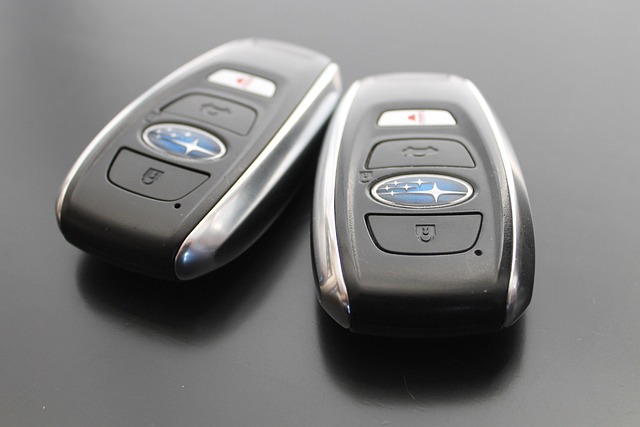Business key card entry systems have dominated access control for years, offering customizable security through physical cards and a centralized database. However, digital transformation through mobile integration has emerged as a game-changer, providing convenience and security with smartphone-based solutions. NFC technology enables users to tap their phones at readers, eliminating physical cards. Implementing these mobile key card solutions requires best practices like user-friendly interfaces, multi-factor authentication, and regular security updates for a successful transition that maintains robust security while enhancing accessibility.
Mobile key card solutions are transforming how businesses manage access control. In an era where smartphones are ubiquitous, integrating physical security with digital convenience has become a priority. This article explores the transition from traditional business key card entry systems to mobile integration. We delve into the benefits, technical workings, and best practices, providing insights for organizations looking to enhance their security while offering modern accessibility.
From understanding the fundamentals of business key card entry to implementing smartphone solutions, this guide covers all aspects of mobile key card technology.
Understanding Business Key Card Entry: The Traditional Approach
In the traditional world of access control, business key card entry systems have long been the norm. These systems rely on physical cards with unique identifiers that are swiped or inserted into readers at points of entry. This method has served businesses well, providing secure access while allowing for specific permissions based on different card types and levels. Employees, visitors, and contractors each have tailored access rights assigned to their cards, ensuring a controlled environment.
The process involves a central database that stores information about every card, including its type, expiration date, and associated user details. This data is then used by access control software to verify card authenticity and grant or deny entry accordingly. While it may seem outdated in today’s digital age, the traditional business key card entry system remains a reliable and cost-effective solution for many organizations due to its simplicity and proven track record.
The Rise of Mobile Integration: Benefits and Advantages
In today’s digital era, the rise of mobile integration has transformed various sectors, and the world of business key card entry is no exception. Mobile key card solutions for smartphones offer a seamless and secure way to access buildings, offices, or event venues, eliminating the need for traditional physical cards. This shift towards digital security provides numerous benefits, such as enhanced convenience, improved accessibility, and reduced environmental impact by minimizing plastic waste.
For businesses, implementing mobile key card systems can streamline operations and improve efficiency. Employees can easily access secured areas using their smartphones, eliminating the hassle of carrying physical keys or cards. Additionally, these solutions enable remote access control, allowing managers to grant or revoke permissions from anywhere, enhancing overall security management. With real-time monitoring and tracking capabilities, businesses can better navigate visitor flow and ensure a controlled entry process.
How Mobile Key Card Solutions Work: A Technical Overview
Mobile Key Card Solutions leverage advanced technologies to seamlessly integrate smartphone functionality with traditional business key card entry systems. At their core, these solutions utilize Near Field Communication (NFC) technology, enabling users to simply tap their smartphones against a reader to gain access. This contactless interaction replaces the need for physical key cards, enhancing security and convenience.
Behind the scenes, a secure mobile app generates digital keys that are wirelessly transmitted to the smartphone. When an authorized user approaches a card reader, the NFC chip in their phone communicates with the reader, authenticating the digital key and granting access. This process ensures that only those with valid permissions can enter secured areas, streamlining security protocols while providing a hassle-free experience for users familiar with mobile interactions.
Implementing Smartphone Integration: Best Practices and Security Considerations
Implementing smartphone integration for mobile key card solutions is a game-changer in modern access control systems, offering businesses enhanced convenience and security. To ensure a successful transition to digital key cards on smartphones, best practices involve ensuring seamless user experiences while prioritizing robust security measures. Start by providing clear instructions and user-friendly interfaces that guide employees through the setup process, making it simple to associate their personal devices with secure access credentials. Regular training sessions can help address any concerns or challenges users might face.
Security considerations are paramount when adopting mobile key card technology. Implement strong encryption protocols to safeguard digital keys from unauthorized access or interception. Multi-factor authentication (MFA) should be mandatory, adding an extra layer of protection. Regularly update security patches and employ secure network connections to prevent cyberattacks. Additionally, enable remote deactivation capabilities for lost or stolen devices, minimizing potential risks associated with compromised access credentials.
Mobile key card solutions offer a modern, efficient approach to traditional business key card entry systems. By integrating smartphone technology, organizations can streamline access control, enhance security, and provide employees with a more convenient and secure method of entering premises. This innovative solution not only improves operational efficiency but also keeps pace with the evolving digital landscape. Implement these mobile solutions thoughtfully, prioritizing user experience while maintaining robust security measures, to unlock a smarter future for your business’s entry systems.
